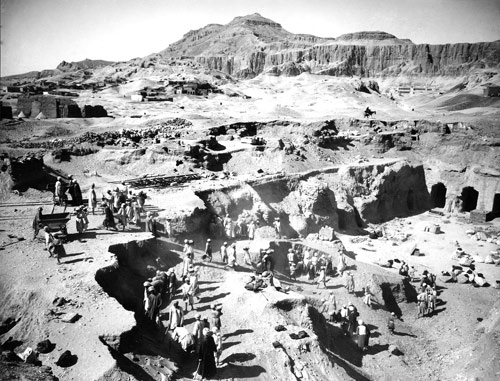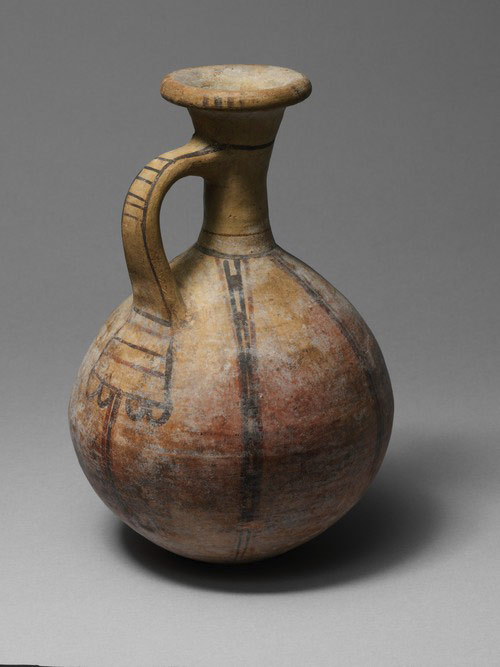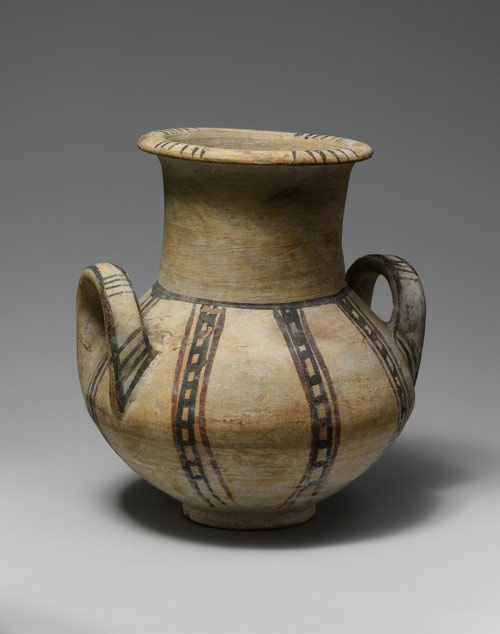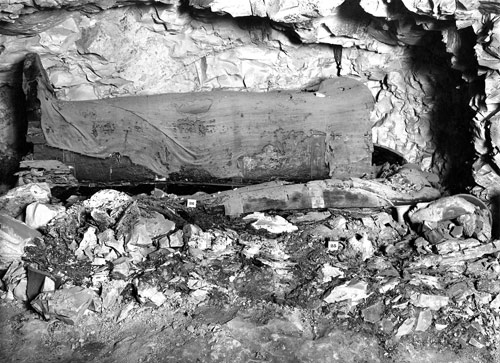 Traveling Exhibitions
Traveling Exhibitions Traveling Works of Art
Traveling Works of Art Conservation Projects
Conservation Projects Excavations
Excavations Fellows
Fellows Exchanges & Collaborations
Exchanges & Collaborations Multiple Items
Multiple Items
The Met Around the World presents the Met’s work via the global scope of its collection and as it extends across the nation and the world through a variety of domestic and international initiatives and programs, including exhibitions, excavations, fellowships, professional exchanges, conservation projects, and traveling works of art.
The Met Around the World is designed and maintained by the Office of the Director.
Traveling
Exhibitions
The Met organizes large and small exhibitions that travel beyond the Museum's walls, extending our scholarship to institutions across the world. See our national and international traveling exhibition program from 2009 to the present.
Traveling
Works of Art
The Met lends works of art to exhibitions and institutions worldwide to expose its collection to the broadest possible audience. See our current national and international loans program.
Conservation
Projects
The preservation of works of art is a fundamental part of the Met's mission. Our work in this area includes treating works of art from other collections. See our national and international conservation activities from 2009 to the present.
Excavations
The Met has conducted excavations for over 100 years in direct partnership with source countries at some of the most important archaeological sites in the world. Today we continue this tradition in order to gain greater understanding of our ancient collections. See our national and international excavation program from the Met's founding to the present.
Fellows
The Met hosts students, scholars, and museum professionals so that they can learn from our staff and pursue independent research in the context of the Met's exceptional resources and facilities. See the activities of our current national and international fellows.
Exchanges & Collaborations
The Met's work takes many forms, from participation in exchange programs at partnering institutions and worldwide symposia to advising on a range of museum issues. These activities contribute to our commitment to advancing the work of the larger, global community of art museums. See our national and international exchange program and other collaborations from 2009 to the present.
 Clearing the courtyard of the Middle Kingdom tomb (5A 465). Hathsepsut's temple is visible in the distance at the base of the cliffs in the upper right. Photograph by Harry Burton, 1915–16. Archives of the Egyptian Expedition, Department of Egyptian Art.
Clearing the courtyard of the Middle Kingdom tomb (5A 465). Hathsepsut's temple is visible in the distance at the base of the cliffs in the upper right. Photograph by Harry Burton, 1915–16. Archives of the Egyptian Expedition, Department of Egyptian Art.
Cosmetic Box with a Swivel Top
New Kingdom, early Dynasty 18, ca. 1550–1458 B.C.
Egypt, Upper Egypt; Thebes, el-Asasif, Courtyard CC 41, Pit 3, Burial B 4, Between head of coffin and wall, MMA 1915–1916
Rogers Fund, 1916 (16.10.425)


Game Box for Playing Senet and Twenty Squares
Second Intermediate Period–Early New Kingdom, Dynasty 17–Early Dynasty 18, ca. 1635–1458 B.C.
Egypt, Upper Egypt; Thebes, el-Asasif, Courtyard CC 41, Pit 3, Burial E 3, In coffin, MMA 1915–1916
Rogers Fund, 1916 (16.10.475a)


Jug
New Kingdom, early Dynasty 18, ca. 1550–1458 B.C.
Egypt, Upper Egypt; Thebes, el-Asasif, Courtyard CC 41, Pit 3, Burial B 4, Between head of coffin and wall, MMA 1915–1916
Rogers Fund, 1916 (16.10.426)


Two-handled Jar
New Kingdom, early Dynasty 18, ca. 1550–1458 B.C.
Egypt, Upper Egypt; Thebes, el-Asasif, Courtyard CC 41, Pit 3, Burial B 4, Between head of coffin and wall, MMA 1915–1916
Rogers Fund, 1916 (16.10.427)

 The ruined coffins of Amenemhat (25), Ruyu (26), and the shrouded coffin of Bakamun (called Baki) in the tomb of Neferkhawt (8A 226). Photograph by Harry Burton, February 9, 1935. Archives of the Egyptian Expedition, Department of Egyptian Art.
The ruined coffins of Amenemhat (25), Ruyu (26), and the shrouded coffin of Bakamun (called Baki) in the tomb of Neferkhawt (8A 226). Photograph by Harry Burton, February 9, 1935. Archives of the Egyptian Expedition, Department of Egyptian Art. Works displayed from the tomb of Neferkhawt. Lidded Jar, Pitcher, Heart Scarab. Faience, bronze or copper alloy, serpentine, gold. Rogers Fund, 1935 (35.3.97a, b, .99, .103)
Works displayed from the tomb of Neferkhawt. Lidded Jar, Pitcher, Heart Scarab. Faience, bronze or copper alloy, serpentine, gold. Rogers Fund, 1935 (35.3.97a, b, .99, .103)
Egypt
1915–1916, 1935
In the early twentieth century, Howard Carter and Lord Carnarvon discovered and excavated the northern half of the courtyard. A few years later, in the 1915–16 season, Ambrose Lansing, who oversaw the Metropolitan Museum's excavations during World War I, cleared the southern half of the courtyard. Lansing's efforts were rewarded with the discovery of numerous intact burials dating from late Dynasty 17 to early Dynasty 18. This important transitional period encompasses the time when a family of Theban rulers (Dynasty 17) succeeded in reunifying Egypt under a single king, Ahmose, who ushered in the New Kingdom. Objects from these excavations that came to the Museum in the division of finds may be seen in Egyptian galleries 114 and 117.
In January 1935, while excavating near the eastern end of Hatshepsut's causeway, Museum excavators Ambrose Lansing and William C. Hayes discovered the family tomb of Neferkhawt, a scribe who served Hatshesput when she was a princess during the reign of her father, Thutmose I (ca. 1490 B.C.). The tomb had been used over several generations before it was covered by a causeway built by Hatshesput's nephew, Thutmose III, in about 1435 B.C. The occupants included Neferkhawt and his wife, Rennefer, both elderly when they died; their daughter Ruyu and son Amenemhat, who also lived long lives; and a man named Bakamun, perhaps Ruyu's husband. An adult woman and four children, presumably also Neferkhawt's relatives, had been placed in the tomb some years later.
Neferkhawt's tomb was cut into crumbling bedrock at the edge of the desert near cultivated land. Over the centuries, groundwater and insects had largely destroyed the coffins and other wooden tomb furnishings, but careful recording and removal of the remains allowed excavators to reconstruct, at least on paper, almost all the contents of this otherwise intact tomb. These objects reflect a gradual change in the style of funerary furnishings, personal ornaments, and possessions over a period of about half a century in the early New Kingdom. Objects from Neferkhawt's tomb that came to the Museum in the division of finds may be seen in Egyptian gallery 116.

